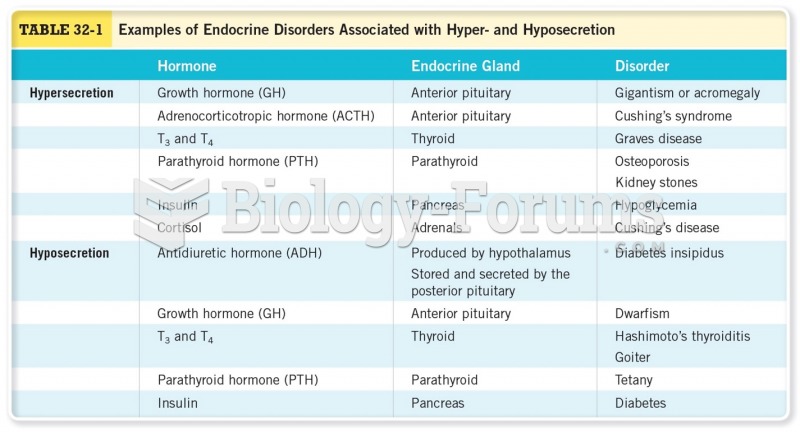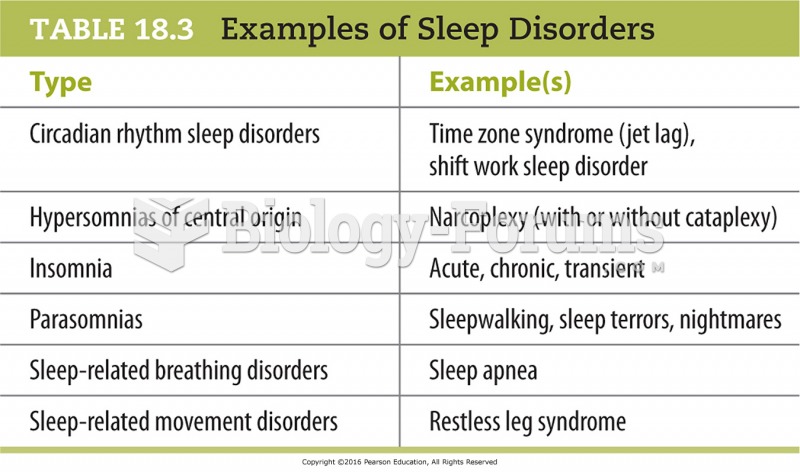Answer to Question 1
ANSWER:
Night terror: A sleep disorder in which the sleeper wakes suddenly in great distress, but without experiencing the imagery of a nightmare. There is usually no memory of the night terror the next day. In night terrors, the usually smooth transition from Stage 4 N-REM sleep upward into REM goes awry. There may be a genetic predisposition to night terrors, as 80 of people with this condition report a family history for the behavior.
Onset insomnia: A sleep disorder characterized by an inability to initiate normal sleep. In cases of onset insomnia, a person will lie in bed for what seems to be a very long period but be unable to go to sleep. Stress and anxiety are frequent causes of this type of insomnia.
Maintenance insomnia: A sleep disorder characterized by an inability to maintain normal sleep. Maintenance insomnia occurs when sleep is frequently interrupted or early waking occurs. These cases typically result from stress, substance use, or psychological disorders.
Narcolepsy: A sleep disorder characterized by the intrusion of REM phenomena into wakefulness, sometimes referred to as sleep attacks. Attacks are often instigated by strong emotions. In many cases, narcolepsy appears to be a genetically determined disturbance in the control of REM sleep. The gene suspected of abnormalities in narcolepsy affects the activity of neurotransmitters known as orexins. Cells in the hypothalamus that normally secrete orexins are missing or damaged in the brains of patients with narcolepsy.
Cataplexy: A disorder, which occurs when the muscle paralysis normally associated with REM sleep occurs during wakefulness without any loss of consciousness. Having sex is a common emotional trigger for the disorder. Many patients with narcolepsy also experience sleep paralysis, or muscle paralysis that either precedes actual sleep or lingers once the person has awakened. Although upsetting, this paralysis is easy to resolve. Simply touching the person is enough to end the paralysis.
Answer to Question 2
ANSWER:
Stage 1 N-REM: This stage usually occurs when a person first goes to sleep. An EEG shows patterns that are difficult to distinguish from those of the drowsy, waking volunteer. Some theta waves (47 cycles per second), which are larger and slower than alpha waves, are observed. At this stage, the person may not be aware that he or she is sleeping. Frequently, we awaken a friend or family member who has fallen asleep in front of the television by turning off the program, only to have the sleeping person deny being asleep.
Stage 2 N-REM: After 10 to 15 minutes, Stage 1 of N-REM gives way to Stage 2. Further reductions in heart rate and muscle tension occur, and the EEG begins to show special waveforms called K-complexes and sleep spindles that occur only in sleep. These particular types of activity might reflect the brains efforts to keep us asleep while continuing to monitor the external environment. We usually sleep through familiar stimuli, such as the hum of an air conditioner, while waking in response to unexpected stimuli, such as the sound of a door opening.
Stages 3 and 4 N-REM: After about 15 minutes in Stage 2, we enter Stage 3 and then Stage 4 N-REM sleep. Both of these stages show delta wave activity, which is the largest, slowest (14 cycles per second) waveform we will observe. Stages 3 and 4 differ primarily in the amount of delta activity that occurs, with Stage 4 having the most. We are very deeply asleep in these stages. Awakening from Stage 4 is difficult, and considerable disorientation may occur before a person becomes fully awake. You may have received a telephone call about an hour after you first go to sleep, when you are likely to be experiencing Stage 4. If you hear the telephone at all, it may take several seconds to locate the phone and wake up enough to have a decent conversation.
REM sleep: The first episode of REM sleep occurs between 90 and 120 minutes after the onset of sleep. This stage is often referred to as paradoxical sleep, reflecting a combination of brain activity resembling wakefulness with the external appearance of deep sleep. During REM, the EEG shows activity very similar to waking activity. The eyes make the periodic movements back and forth that give this stage its name. The autonomic nervous system becomes very active. Heart rate, blood pressure, and breathing become rapid or irregular. Males experience erections, while females experience increased blood flow in the vicinity of the vagina. Major postural muscles are completely inactive during REM sleep, effectively paralyzing the sleeper, although smaller muscles in the fingers and toes might twitch. If awakened during this stage, most people will report vivid, storylike dreams.







